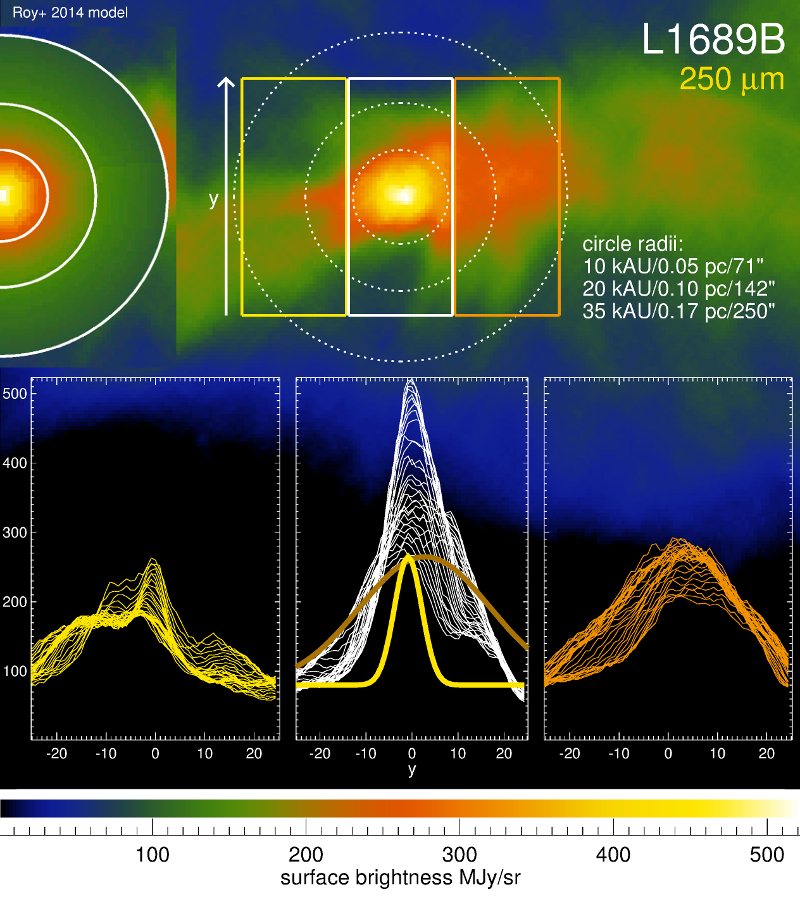| EPoS Contribution |
|
Modeling the core-filament system L1689B: what to learn from spherical cylinders and the filament mass function
Juergen Steinacker IPAG/MPIA, Grenoble, FR | |
|
For decades we have been missing a global answer to the question:
what ends the life of a pre-stellar core and starts star formation?
Is it the end of a supporting force based on magnetic fields or turbulence,
is it an external kinetical trigger, or a mass overload?
As the new instruments better probe the complex filamentary network from which
cores emerge, attention also turns to the role of the hosting filaments. To characterize the physical properties like the spatial structure of density and temperature of a typical core-filament system, we have performed radiative transfer modeling of six FIR continuum maps of L1689B (Herschel PACS/SPIRE, SCUBAII) with a core that shows indication for infall (and rotational) motions.
| |
 | |
| Caption: The core-filament system of L1689B seen at 250 μm (background color map). Perpendicular stripes visualize the filament substructure and the embedded core. Thick lines show considered approximations of the filament contribution. The Roy+ 2014 model considers radial temperature and density variations of the azimuthally averaged emission stretching deep into the filament (top left). | |
| Collaborators: A. Bacmann, IPAG, FR Th. Henning, MPIA, DE S. Heigl, U Munich, DE |
Suggested Session:
Cores and Collapse |

